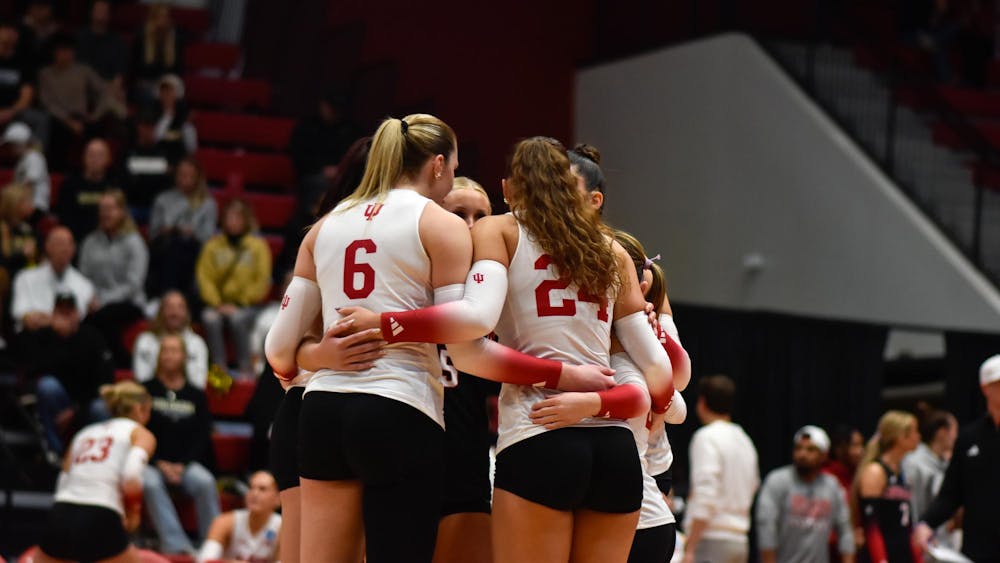Treating an opioid addiction is difficult, but not hopeless.
Dr. Adam Robinson Jr., director of the VA Maryland Health Care System, addressed an audience of students, faculty, staff and community members Friday afternoon at the School of Public Health as part of the school’s 17th annual Marian Godeke Miller Lecture.
Robinson is an IU alumnus and former surgeon general of the United States Navy.
According to the Substance Abuse and Mental Health Services Administration, more than 21 million Americans older than 12 have a substance abuse disorder. In Indiana, opioid addiction created an HIV outbreak in Scott County that resulted in 190 cases of the virus, the Indiana State Department of Health reported.
Although the consequences of drug use have reared their ugly head in recent years, Robinson said the modern problem is rooted in drug use among soldiers who served in the Vietnam War. In 1971, the military implemented “Operation Golden Flow,” a program requiring soldiers to pass a urine drug test before they were allowed to return home.
However, once they arrived in the United States, they were given no further treatment, causing 12 percent of servicemen who used heroin to relapse within three years, Robinson said.
Today, the advent of new medicine combined with the wars in Iraq and Afghanistan have created a generation of soldiers who survived injuries that would have been fatal in any other conflict. But with survival comes pain. Through prescriptions for painkillers and new standards that connect pain with patient satisfaction, Robinson said the healthcare system has created the new generation of opioid addicts.
“When you give your patients what they demand whether you need it or not because you’re trying to get a satisfaction score that’s higher, you’re not necessarily doing them a favor,” Robinson said.
In 2004, the state created Indiana’s Prescription Drug Monitoring Program, or INSPECT, to monitor the amount of opiates distributed in the state. Licensed pharmacists are required to daily report any controlled substance prescribed to a patient.
Rosie King is an evaluator and survey coordinator for the Indiana Prevention Resource Center, an auxiliary organization of the School of Public Health that in part collects data to help health practitioners improve their services. King said the availability of opioids creates an addiction that can lead people to find other means of getting high once the pills run out.
“Heroin use can be linked to people that can be addicted to opioids and then find heroin because it’s much cheaper,” King said.
Despite the issue’s longevity, Robinson said the medical field still struggles to define opioid addiction, either as a disease or a behavioral disorder. He illustrated the point through a scenario in which a diabetic and an addict are stuck on a deserted island.
If the diabetic is given food and water but no insulin, he dies, Robinson said. If an addict is given the same provisions but no drugs, he thrives.
“If you stop the behavior, you stop the problem,” he said.
However, Robinson said he recognizes that a combination of prescriptions and mental health treatment is needed to effectively treat addiction. In addition to taking drugs like methadone to curb cravings, an addict needs a network of resources and individuals he or she can go to for assistance.
However, Robinson said the rise of technology in the medical setting has diminished the relationship between the doctor and the patient by undermining the system of holistic care needed to treat addiction.
“You see, medicine is a contact sport. You have to actually talk with someone,” Robinson said. “If you can’t do that, then you miss the opportunity to get the comprehensive care and to do the things that you need.”
Outside of the clinical setting, public health plays a large role in tackling addiction by preventing and serving as the first line of defense, Robinson said. Needle exchanges are key to reducing infection transmitted through drug use and identifying addicts willing to undergo treatment. Medicines like Naloxone save the lives of people dying from an overdose.
Mohammad Torabi, founding dean of the School of Public Health, said it is important the school equips young public health professionals with the knowledge to tackle not only known issues like tobacco use, but also issues that are developing in real time.
“We are not a typical, traditional school of public health that was built on a model of the diseases of 19th and 20th centuries,” he said. “We are a school, and we tailored our program and our mission to the current trend of public health problems, and opium is one of them.”
Against a backdrop of a PowerPoint slide with a photo of a tranquil ocean shore, Robinson concluded his talk by stressing the importance of “therapeutic optimism.” Addicts must understand they are the only ones that can kick the habit. But health providers must believe the person can overcome his or her addiction.
“They can change,” Robinson said. “Its up to the patient, but they can make the change.”





